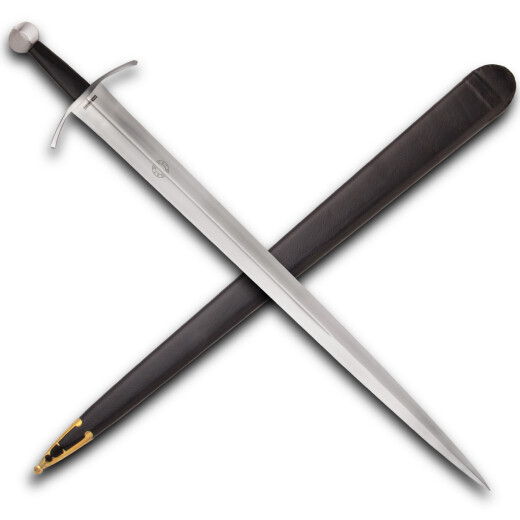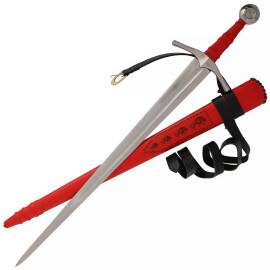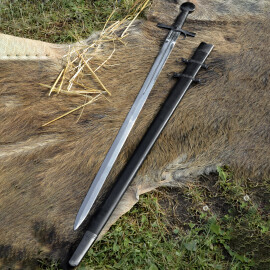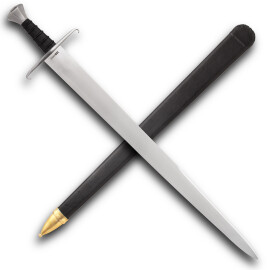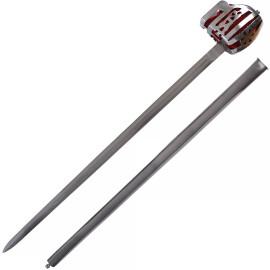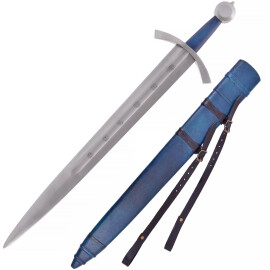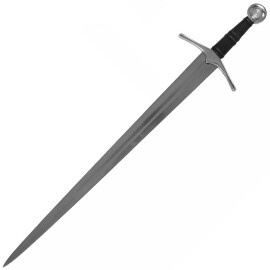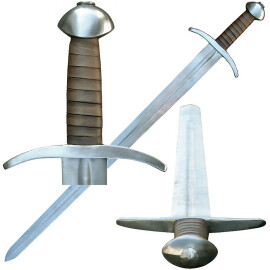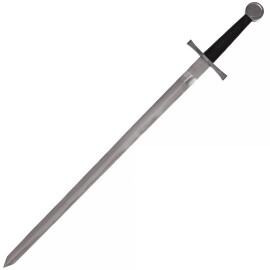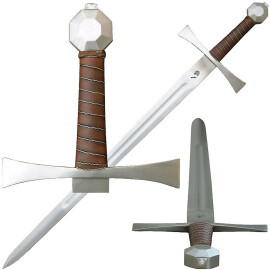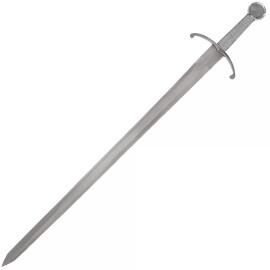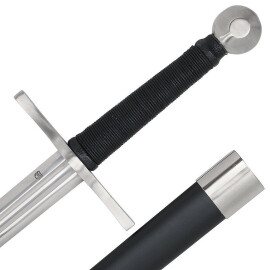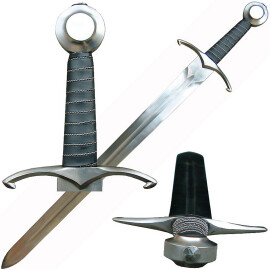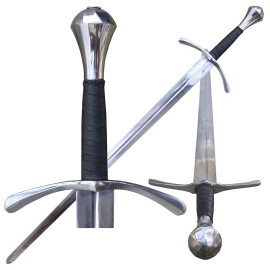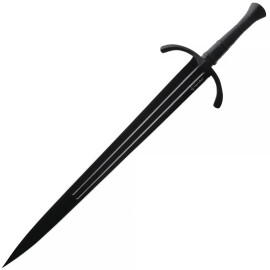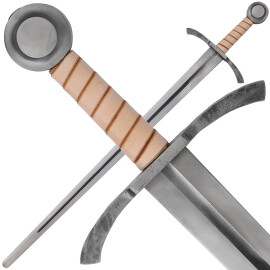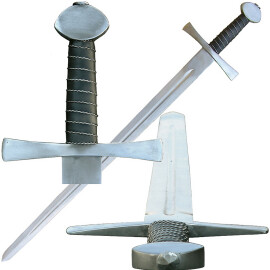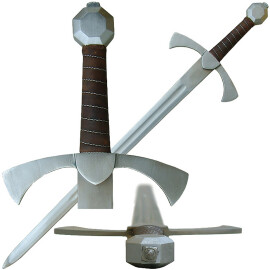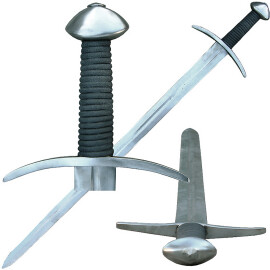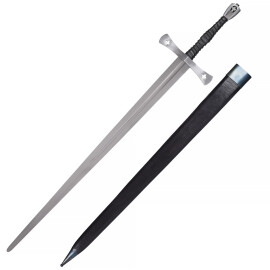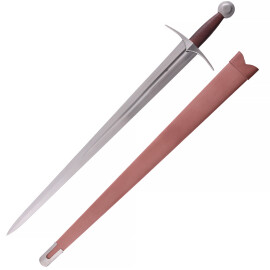European 14th Century Arming Sword, licensed by the Royal Armouries
The pommel of this sword looks conventional when viewed dead-on, but turn the sword sideways and an unusual, somewhat conical shape reveals itself. The sword was reputedly found in a peat bog together with another now in Rome and is unusually well preserved. Comparable swords have been found across much of Europe. One-handed arming swords were carried as sidearms by many people at the time, often used with a shield or buckler. They can be seen used with small bucklers in the famous fencing treatise Royal Armouries Ms. I.33, as well as equipping fully armored knights in numerous manuscripts and monuments. This sword could have been carried at the beginning of the Hundred Years War, and it features several very distinctive features. The subtly shaped crossguard curves towards the blade, tapering and then swelling at the terminals, and the distinctive pommel has very particular angles and facets. The hilt sits very comfortably in the hand. The broad leaf-like straight blade is of a flattened-diamond cross-section, double-edged, with a narrow fuller to reduce mass. The width swells slightly where it meets the hilt and the gracefully curved edges finish in an acute thrusting tip. The sword is quite light for the size but has a lot of blade presence and power in the hand, being very well suited to give impressive cuts and thrusts. More information...
Notify me when the item is in stock.
We will inform you as soon as we stock up.
European 14th Century Arming Sword, licensed by the Royal Armouries
Royal Armouries sword #IX.2141.
This replica is crafted with a better blade than the original; the blade is hand forged by an experienced, skilled blacksmith exactly in the same manner as the original, but with superior modern 1080 high carbon steel that is fully tempered and is distally tapered for proper weight distribution.
The sheath is made to replicate one of the period, with a wood body and covered with leather. The tip is reinforced with a brass chape that features ornate cut-outs and an acorn tip. At the throat, the leather extends upward and covers part of the guard at the ricasso.
Includes a certificate of authenticity on heavy stock.
Windlass Classic Wax and polishing cloth are included.
Specifications:
- Overall length: 101cm
- Blade length: 85cm, double edge
- Guard: 18cm wide
- Blade width at ricasso 63mm
- Blade is distally tapered: 5,5mm thick at guard, 3,1mm at tip
- The blade is semi-sharp. The striking edge approx. 1mm thick
- Weight: 1.220 g
A top-quality replica made by Windlass Steelcrafts®
Write to our specialist


